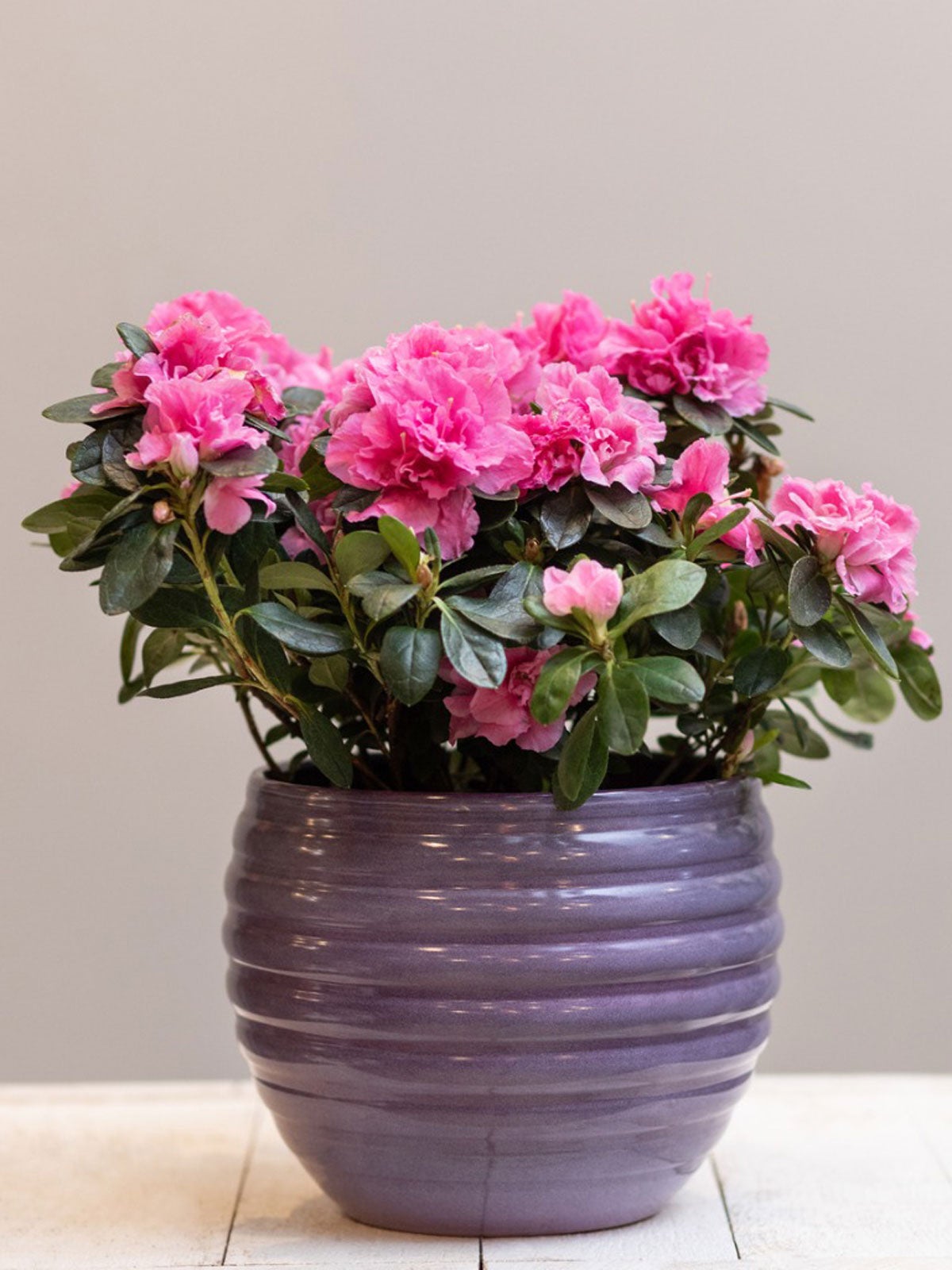Care Of Indoor Azaleas: Tips For Growing An Azalea Houseplant


Greenhouse azaleas are those beautiful, multicolored joys of spring, those bright spots in the grocery store or garden nursery when everything else is winter gray. Their bright beauty has caused many a gardener (and many non-gardeners) to ask, "Can you grow azalea indoors successfully?" The answer is, "Of course you can!"
Tips for Growing an Azalea Houseplant
You can grow azalea indoors much like any other houseplant, but as with other blooming plants, there are a few tricks you need to know about the care of indoor azalea if you want to keep them blooming year after year.
The first step in growing an azalea houseplant is to choose the right shrub. You are looking for greenhouse azaleas, not hardy azaleas, which are only grown outdoors.
Both are Rhododendrons, but different sub genres, one of which is only hardy to USDA plant hardiness zone 10. That's the one you want. Greenhouse azaleas aren't always marked as such, but they will almost always be sold indoors and usually come with that decorative foil wrapping around their pots.
Look for a plant with only a few buds open and showing color. That way, you'll be able to enjoy that first full bloom for a longer period of time. Flower buds should look healthy and be at different stages of development as a sign they are actively growing.
An azalea houseplant with yellowed leaves isn't healthy. Look under the leaves as well. That's where those pesky whiteflies and mealybugs dwell. They love azaleas. As houseplants, many growers ship azaleas in clear plastic sleeves. These sleeves are meant to protect the plant in shipping, but they also trap the ethylene gas released by the plant, which can cause leaf drop.
Try to find a retailer who removes them or, if you can't, remove it from your greenhouse azalea as soon as you get it home.
Gardening tips, videos, info and more delivered right to your inbox!
Sign up for the Gardening Know How newsletter today and receive a free copy of our e-book "How to Grow Delicious Tomatoes".
Care of Indoor Azalea
In their natural environment, these plants live in the understory of high trees. They thrive in cool, filtered sun. Azaleas as houseplants do best at cooler temperatures, ideally around 60-65 F. (16-18 C.). Cooler temperatures will also help the blooms last longer.
Keep them well lit, but out of direct sun. Moisture should be your greatest concern in the care of indoor azaleas. Never allow your plant to dry out. While watering from the top may provide sufficient care, indoor azaleas enjoy the occasional dunk, pot and all, in a larger container of water.
When the bubbles stop, pull it out, and let it drain. Whatever you do, don't let these plants dry out. Keep them damp, not soggy, and don't fertilize until flowering is complete.
After they've flowered, the lives of most azaleas as houseplants are over, because this is where most people throw them away or plant them in the spring garden for their foliage, allowing Mother Nature to do the deed with frost the following fall.
Getting Greenhouse Azaleas to Rebloom
Can you grow azalea indoors and get it to rebloom? Yes. It isn't easy, but it's worth a try. Once the blooms have faded, give your plant a little more light and fertilize it with an all-purpose liquid fertilizer every two weeks.
When the weather warms, plant it, pot and all, in your outdoor garden. If you'd rather, keep the pot in a semi-shaded area indoors or out. Since they prefer slightly acidic soil, you may want to use a fertilizer manufactured for that purpose. Shape the plant in midsummer, cutting back any straggly growth and keep it well watered. Bring it back indoors before the first frost of autumn.
Now the hard part begins. Between early November and early January, greenhouse azaleas need temperatures ranging between 40 and 50 F. (4-10 C.). A sunny, enclosed, but unheated porch will do the job so long as the temperature doesn't drop to freezing. This is essential for growing an azalea as a houseplant, because the blooms set during this chilling time.
During this period, give your plant enough water to keep it from wilting, but don't be too generous and don't fertilize. All the nutrition it needs has been stored in the leaves and fertilizing now will give you lush growth without flowers. In January, move the plant indoors, still maintaining nighttime temperatures around 60 F. (16 C.).
That back bedroom that everyone complains about is ideal for this. In a few weeks, flowering should begin.
Growing an azalea houseplant and getting it to bloom again takes time and careful planning, but the reward of such lovely blooms make the effort well worth it.

Jackie Rhoades began writing for Gardening Know How in 2010.
-
 Try The Trend – Turn Any Bed Into A Keyhole Garden With This Clever In-Ground Composter
Try The Trend – Turn Any Bed Into A Keyhole Garden With This Clever In-Ground ComposterKeyhole gardening is an efficient and sustainable practice that saves space. Get started on this DIY project quickly and easily with an in-ground composter.
By Bonnie L. Grant
-
 4 Superfast Composting Methods: Turn Waste Into Garden Gold In 30 Days Or Less
4 Superfast Composting Methods: Turn Waste Into Garden Gold In 30 Days Or LessTry the fastest composting methods to turbocharge your pile and transform kitchen scraps and garden waste into finished compost in just a few weeks.
By Mary Ellen Ellis